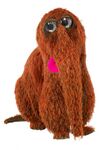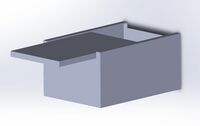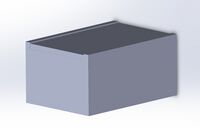BME100 f2018:Group12 T0800 L6
| Home People Lab Write-Up 1 | Lab Write-Up 2 | Lab Write-Up 3 Lab Write-Up 4 | Lab Write-Up 5 | Lab Write-Up 6 Course Logistics For Instructors Photos Wiki Editing Help | ||||||||||||||||||||||||||||||||||||||||||||||||||||||||||||||||||||||||||
Team 12
Our Brand Name LAB 6 WRITE-UPBayesian StatisticsOverview of the Original Diagnosis System 15 teams of students diagnosed 2 patients per team, resulting in 30 diagnoses of the disease-associated SNP. First, we mixed the PCR reaction mixture containing each DNA sample, producing 3 duplicates for each patient. Each sample was then placed in the PCR machine and heated to cause the DNA molecules to denature, the primers will then anneal to the single stranded DNA, and the polymerase will extend the DNA strands. A drop of each sample was combined in a fluorimeter and then SYBR Green I was added. An images of each drop was taken and analyzed in Image J to measure the concentration of DNA per sample. If the sample had a high concentration, the test resulted positive for the disease SNP and if the sample had a low concentration, the test resulted negative. To prevent error, 3 trials were conducted for each patient and the proper PCR controls were set. Error was avoided in the fluorimeter portion by using different known concentrations to calibrate Image J and 3 images of each drop were taken to ensure a quality image. Both positive and negative controls were used in order to compare the final results and aid in giving a more complete conclusion. This lab resulted in 20 test conclusions of 11 positive, 16 negative, and 3 inconclusive results. What Bayes Statistics Imply about This Diagnostic Approach
Calculation 1 has a probability of a patient receiving a positive test conclusion of 37%, and a probability of a positive PCR reaction is 33.3%. There was some slight error resulting in the probability of a patient receiving a positive final test conclusion given a positive PCR reaction at 93%. Calculation 2: What is the probability that a patient will get a negative final test conclusion, given a negative diagnostic signal?
The probability that a patient will get a negative final test conclusion is 48%, the probability of a negative PCR reaction is 53%. This shows that there is some error in the PCR test results, so the probability that a patient will get a negative final test conclusion given a negative PCR reaction is 81%, not 100%. Calculation 3: What is the probability that a patient will develop the disease, given a positive final test conclusion?
The probability that a patient will get a positive final test conclusion is 33.3%, the probability of a patient developing the disease is 36.7%. This shows that there is some error in the test results, so the probability that a patient will get a positive final test conclusion given they develop the disease is 33%. Calculation 4: What is the probability that a patient will not develop the disease, given a negative final test conclusion?
The probability of the patient not developing the disease given a negative test conclusion is 55%, so there is a chance that the test was falsely negative.
Intro to Computer-Aided Design3D Modeling Our Design
Feature 1: ConsumablesThe consumables kit provided with our product will include liquid reagents, plastic tubes, and glass slides, similar to the items worked with in the previous lab. The SYBR Green solution, primer solution, buffer solution, and polymerase chain reaction (PCR) will be included. "Very important is defined as necessary in order to use the main product. The "very important" materials are the SYBR Green and PCR solutions because they are required by the fluorimeter to measure the amount of green light emitted in the droplets. The glass tubes are necessary for holding the reagents and glass slides are provided because they hold the droplets of liquid inside the fluorimeter. Items not included in our consumables kit are pipettors and pipet tips. We can assume that the individual buying this kit already owns or has access to these two items. Feature 2: Hardware - PCR Machine & FluorimeterOur group decided to include the PCR machine because we found no major flaws with the system. The run time is lengthy but otherwise it functioned well. However, our group decided to redesign the fluorimeter. The current fluorimeter is bulky and hard to use. Our group had issues with the camera and lighting while trying to take pictures. To solve this issue we created a slide able door that will limit the amount of light entering the fluorimeter. This will result in clearer images and be more efficient when closing fluorimeter. Our new design will be smaller and user friendly.
| ||||||||||||||||||||||||||||||||||||||||||||||||||||||||||||||||||||||||||






